In a world where water scarcity is becoming more and more common, finding sustainable solutions to conserve and utilize water efficiently is crucial, especially when attempting to shrink your water bill. Rainwater harvesting offers a practical and eco-friendly approach to addressing this challenge. Especially in regions like the Pacific Northwest, where rainfall is abundant for several months of the year, rainwater harvesting presents an opportunity to make a significant impact on individual water conservation efforts.
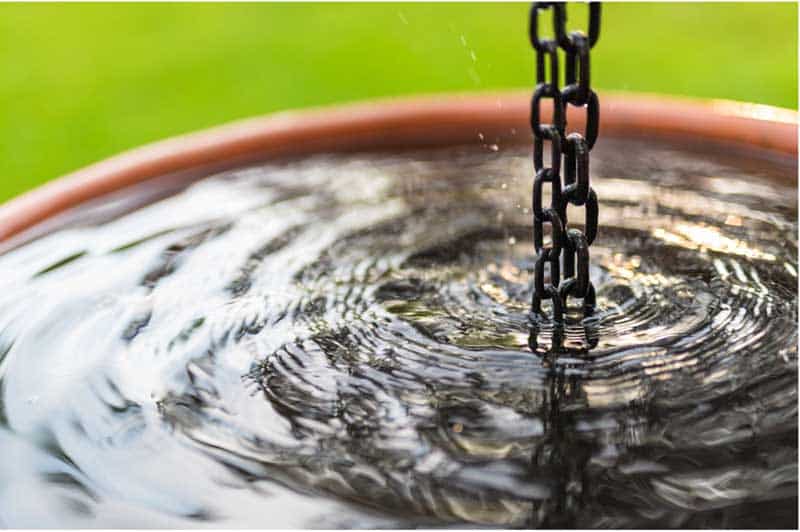
One of the many benefits of rainwater harvesting is the fact that anyone can do it! Designs for rainwater harvesting systems can range from a simple rain barrel located at the end of a downspout to extensive cistern systems intended for situations where substantial quantities of water are going to be required. However, as long as you have the means for capturing water and a container for storing it in, you’re ready to start collecting. To learn more about the basics of rainwater harvesting, its benefits, local regulations and the role roofing plays in implementing effective rainwater collection systems, continue reading!
The Basics of Rainwater Harvesting
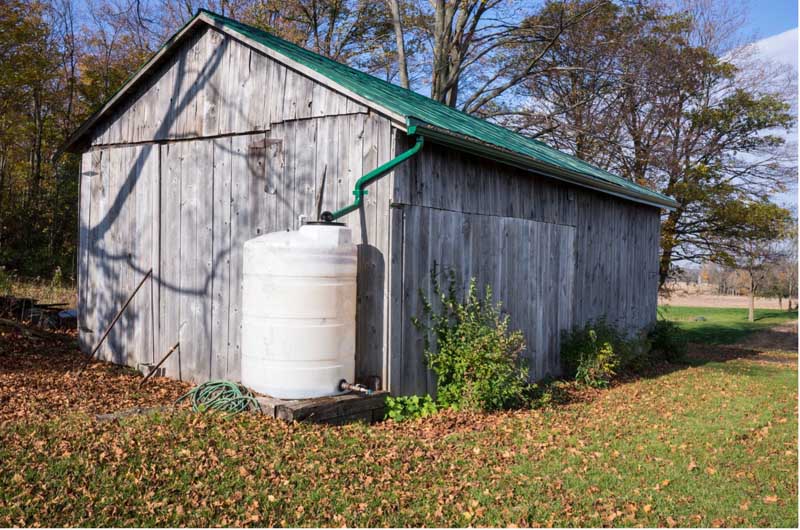
\The rainwater harvesting process begins with the collection of rainwater from rooftops or other hard surfaces using gutters and downspouts to channel the water. The collected water is then directed to storage tanks, where it can then be used for various purposes, ranging from irrigation to non-potable household tasks. Depending on the intended use, the water may need to undergo filtration or treatment before being distributed for use.
Some key components of a rainwater collection system include the catchment area (roof), gutters and downspout and a storage tank, while more advanced systems may also include a delivery system, and treatment system as well. Proper design and installation of these components are essential to ensure the effectiveness of the system, the cleanliness of the water collected and compliance with local regulations. If you want your collected rainwater to be used for activities such cleaning or bathing, you’ll need to ensure that the contents of your tank are properly filtered and treated before use. While treating rainwater can help to improve how safe it is, in order to prevent illness, the CDC recommends rainwater only be used for non-potable applications such as irrigating or watering plants (you don’t intend to eat), toilet flushing, pressure washing and so on.
Benefits of Rainwater Harvesting
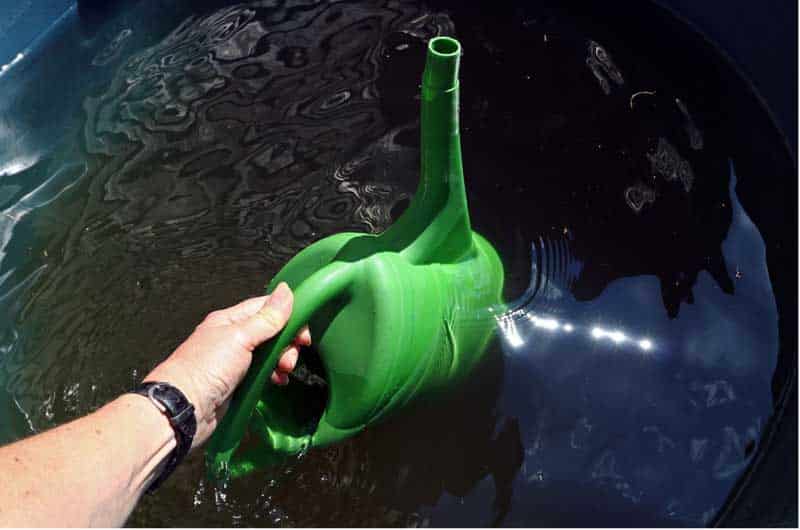
The benefits of rainwater harvesting extend beyond water conservation. By capturing and utilizing rainwater, property owners can:
- Save water and reduce dependency on municipal water supplies.
- Lower water bills by using harvested rainwater for non-potable tasks like irrigation and toilet flushing.
- Promote sustainability and reduce the environmental impact associated with traditional water sources.
- Minimize stormwater runoff, which can help prevent erosion and flooding in urban areas.
- Ensure water supply during droughts or water restrictions, providing a reliable backup source for essential tasks.
- Earn discounts on stormwater charges for their sewer, stormwater and water bill through city and state incentive programs like Portland’s Clean River Rewards.
How Roofs Play a Role in Rainwater Harvesting
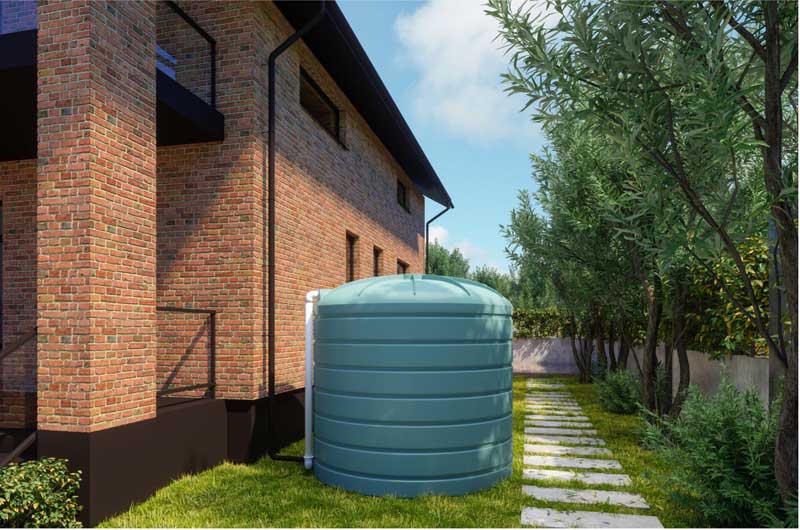
Roofs serve as the primary catchment areas for rainwater harvesting systems. The size, material, and orientation of the roof can significantly influence the quantity and quality of harvested water as well as the location of the rain barrel or tank. Different roofing materials may affect the cleanliness of the collected water, with metal roofs being preferred for their durability and minimal contamination, like the shingle granules typically found on asphalt roofs.
Properly installed gutters and downspouts are also essential for directing rainwater from the roof to the storage tanks. Regular maintenance of gutters, including cleaning and inspection, is necessary to prevent blockages and ensure efficient water flow. If your gutters are filled with debris and foliage or your downspout is clogged, your rainwater collection system will never operate properly, and what water you do manage to collect with be polluted beyond use.
Installing a Rainwater Collection System: What You Need to Know
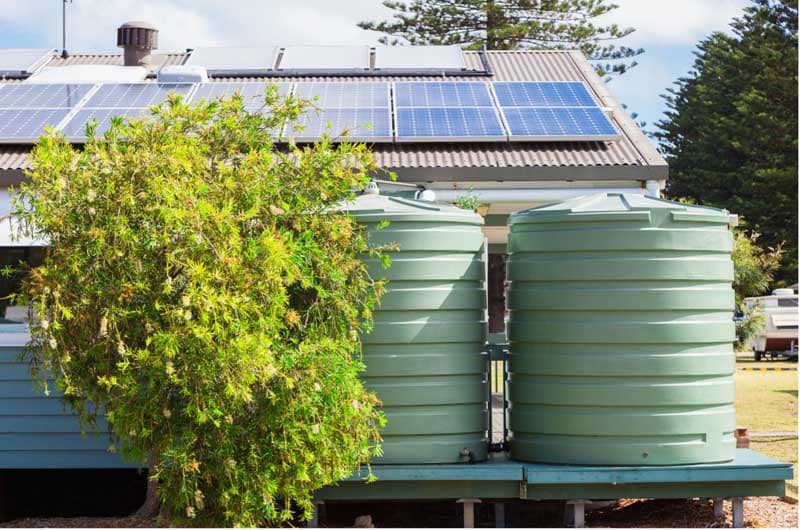
While rainwater collection systems can be installed DIY-style, professional installation is recommended to ensure optimal performance and compliance with permit requirements. The installation process can involve several steps – from conducting a site assessment and creating a system design to the installation of components and testing – depending on the complexity of the system.
Professional installers have the expertise to design and install customized systems tailored to the property’s specific needs and environmental conditions. By trusting the professionals to handle the task, you can rest easy knowing that your property has been thoroughly scrutinized for potential threats such as asbestos roof shingles or lead gutters that could result in contaminated and therefore, unsafe water collection. They can also ensure that your new system meets regulatory requirements, local and state regulations and operates safely and efficiently.
Choosing the Correct Rainwater Harvesting System

Rainwater harvesting offers a practical and sustainable solution to water conservation, especially in regions with ample rainfall like Portland. By capturing and utilizing rainwater runoff from rooftops, property owners can reduce their reliance on municipal water supplies, lower water bills, and minimize their environmental footprint.
At Rainy City Roofing, we understand the importance of sustainable water management and eco-friendly roofing solutions. We take pride in our commitment to superior outcomes, using only the highest quality materials and craftsmanship to ensure lasting durability and performance. With over 30 years of combined experience, our team specializes in installing high-quality roofs, gutters, and rainwater collection systems for residential and commercial properties. So, whether you’re considering upgrading your roof, installing a rainwater harvesting system, or simply need help with repairing and maintaining different aspects of your property’s roof – you can trust Rainy City Roofing Services to deliver exceptional results!
Contact us today to learn more about our services and how we can help improve the sustainability of your residential or commercial property with the installation of a rainwater collection system!

